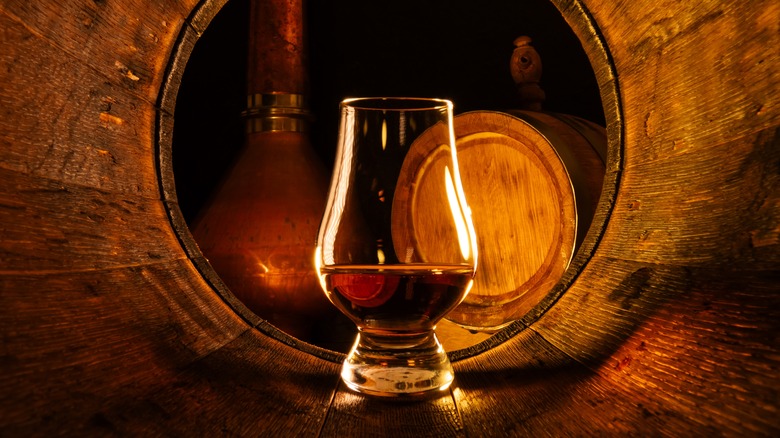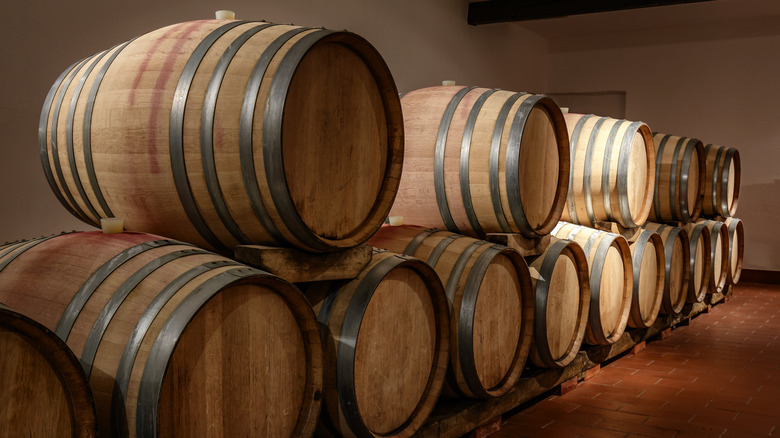How Does Bourbon Aging Actually Work?
A lot of painstaking effort and care goes into the magic of bourbon-making. This spirit must be made in the United States and uses predominantly corn in the mash bill, which creates its characteristic sweetness that people know and love. However, a bourbon's true depth of flavor comes from the lengthiest step in the process: Letting the liquor chill out in a barrel to mature and mellow. Understanding how the aging process works will help you understand and buy bourbon like a pro.
Most bourbon is aged for at least two years, and it must be done in new, oak barrels that have been charred. Many distillers prefer to use American white oak, and barrels should be liquid-proof, but not fully airtight. This gentle airflow helps to impart more of the taste of the oak, though it does result in some of the liquor — between 2% and 5% — evaporating out of the barrel. This loss is referred to as the "angel's share."
The barrels' charring process will depend on the style of bourbon or whiskey. Charring helps to open the pores of the wood so it can better interact with oxygen and the distillate, infusing it with chemical compounds like tannins, lignin, and vanillin. The longer the distillate ages and the heavier the char on the barrel, the more strong, nuanced flavors the whiskey will gain — think of vanilla, fruits, toasted marshmallows, caramel, and baking spices. Another benefit of aging is that the alcohol will taste less "hot," allowing you to discover deeper notes with less of a burn.
Other factors can influence bourbon's taste as it ages
Factors like location also play a major role in bourbon aging. In a humid environment, the proof will lower due to more of the alcohol content evaporating. In a dry climate, more water evaporates, increasing the proof. Even the stacking of barrels will change how the bourbon ages. Heat rises, so barrels stacked high will warm up and age at a faster rate than those lower to the ground. Distilleries can control the aging process and flavor by monitoring the temp and humidity in their storehouses, and may move the barrels around to ensure consistent results.
Bourbon also gains a smoother mouthfeel and darker amber color the longer it ages. There isn't a hard stop on the maximum time a bourbon can spend in the barrel, though you do run the risk of souring or muting the spirit the longer it ages. The sweet spot for aging whiskies can vary, but any length of time after a decade is a risk.
You may have come across bourbon labels that say "finished in," followed by a type of wood that is not oak — and these labels typically fetch a higher price. After bourbon has aged in oak, distillers are able to experiment with additional flavors via a secondary aging process, which is typically shorter than the initial rest time. Common players include sherry, port, or brandy barrels. Using a recycled sherry cask might add notes of dried fruits like raisins and oranges, for example.


